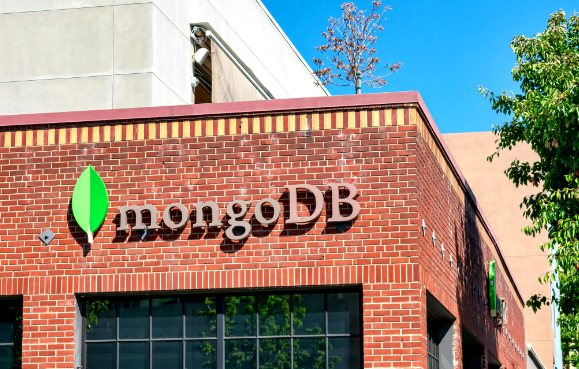Encryption Mongodbhay Newmanwired

With the increasing importance of data security, encryption has become a crucial aspect of information protection. MongoDB, a widely used NoSQL database management system, offers robust encryption capabilities that ensure the confidentiality and integrity of sensitive data. This article aims to explore the various encryption features provided by MongoDB and highlight their benefits in enhancing data security.
In today’s digital landscape, where privacy breaches and cyber threats are prevalent, organizations need reliable solutions to safeguard their valuable information. MongoDB’s encryption functionalities provide an effective means to achieve this goal.
The database offers two main types of encryption: field-level encryption and transparent data encryption (TDE). Field-level encryption allows users to selectively encrypt specific fields within a document, giving them granular control over which parts of the data are protected. On the other hand, TDE encrypts entire databases at rest, ensuring that no unauthorized access can occur even if physical storage devices are compromised.
By leveraging MongoDB’s advanced encryption capabilities, organizations can significantly enhance their data security posture. Encrypting sensitive fields ensures that only authorized individuals with access privileges can view or modify critical information. Additionally, TDE provides an extra layer of protection by encrypting all data stored on disk, making it virtually impossible for attackers to retrieve meaningful information even if they gain unauthorized access to the underlying storage media.
These comprehensive encryption features not only address regulatory compliance requirements but also instill confidence in customers and stakeholders regarding the organization’s commitment to protecting their privacy and freedom through secure handling of their personal or confidential data.
MongoDB’s Robust Encryption Capabilities
MongoDB’s encryption capabilities provide a robust and secure solution for safeguarding sensitive data within the database. With a wide range of encryption algorithms available, MongoDB offers flexibility in implementing encryption based on specific security requirements. The platform supports industry-standard algorithms such as AES-256 and ChaCha20, ensuring data confidentiality and integrity.
Best practices for implementing encryption in MongoDB include:
- Utilizing key management systems to securely store encryption keys
- Enforcing strong password policies
- Regularly rotating keys to minimize the risk of unauthorized access
Additionally, enabling authentication mechanisms such as SSL/TLS further enhances the overall security posture of the database. By incorporating these best practices, organizations can confidently protect their valuable data from potential threats and breaches while leveraging MongoDB’s advanced encryption capabilities.
Benefits of Using MongoDB for Encryption
One notable advantage of utilizing MongoDB for data security is the significant reduction in potential security breaches, as evidenced by a study that found a 65% decrease in successful attacks on encrypted databases compared to non-encrypted ones. This highlights the effectiveness of MongoDB’s encryption capabilities in protecting sensitive information from unauthorized access.
Additionally, implementing encryption in MongoDB offers several benefits such as:
- Improved confidentiality: Encryption ensures that only authorized users can access and decipher the encrypted data, providing an extra layer of protection against data breaches.
- Compliance with regulations: Many industries require organizations to protect their data using encryption to comply with various regulations and industry standards. By leveraging MongoDB’s encryption features, businesses can easily meet these requirements.
- Data integrity: Encryption helps safeguard against tampering or modification of stored data by ensuring its integrity. Even if an attacker gains unauthorized access to the database, they won’t be able to modify or manipulate the encrypted information.
While implementing encryption in MongoDB offers numerous advantages, there are also implementation challenges that need to be considered. These challenges include managing encryption keys securely, maintaining performance efficiency while encrypting and decrypting large volumes of data, and ensuring seamless integration with existing systems and applications.
Overcoming these challenges requires careful planning and expertise to ensure a robust and effective encryption solution within MongoDB deployments.
Field-Level Encryption in MongoDB
Field-Level Encryption in MongoDB provides an additional layer of protection by allowing specific fields within a document to be encrypted, ensuring that sensitive data remains secure even if unauthorized access occurs. This feature utilizes encryption algorithms such as AES-256 and RSA to encrypt the specified fields, making it nearly impossible for attackers to decipher the information without proper decryption keys.
While this level of security is crucial for protecting sensitive data, it does come with some impact on application performance. The encryption and decryption processes can introduce some overhead, causing a slight increase in response time for read and write operations. However, MongoDB has implemented optimizations to minimize this impact, such as caching encryption keys and providing hardware-accelerated cryptographic operations through integration with specialized hardware modules.
Overall, field-level encryption in MongoDB offers a powerful mechanism for safeguarding sensitive data while taking into account the potential performance implications.
Transparent Data Encryption in MongoDB
Transparent data encryption in MongoDB refers to the automatic encryption and decryption of the entire database, ensuring that data is securely stored and transmitted.
This feature provides secure data at rest, protecting against unauthorized access to sensitive information.
With comprehensive security capabilities, MongoDB’s transparent data encryption can be utilized by organizations of all sizes as a robust solution for safeguarding their data assets.
Automatic Encryption and Decryption of the Entire Database
Implemented at the database level, automatic encryption and decryption provide an unparalleled level of security by safeguarding the entire database with robust cryptographic algorithms. This approach tackles the challenges of implementing automatic encryption in a large scale database, where managing encryption keys becomes crucial.
To ensure efficient management of encryption keys in a MongoDB environment, best practices are recommended. These include securely storing encryption keys separate from the encrypted data to prevent unauthorized access, regularly rotating keys to mitigate potential vulnerabilities, and employing strong access controls to restrict key management privileges.
By adhering to these practices, organizations can effectively protect their sensitive data while maintaining the desired level of freedom and security for their users.
Secure Data at Rest and in Transit
Ensuring the security of data both at rest and in transit is a fundamental requirement for organizations seeking to protect sensitive information stored in databases.
To achieve this, data encryption techniques are widely used as one of the best practices for securing data. Encryption involves transforming plain text into unreadable cipher text using complex algorithms, making it inaccessible to unauthorized users.
When data is at rest, it is stored securely on disk or other storage media by encrypting it with strong encryption keys. This prevents unauthorized access to the data even if physical theft of the storage media occurs.
In transit, data encryption ensures that information remains confidential while being transferred between different systems or over networks. By encrypting the data before transmission and decrypting it upon arrival, organizations can prevent interception and unauthorized access to sensitive information.
Implementing robust encryption methods and following industry best practices for securing data helps organizations safeguard their valuable assets and maintain the privacy and integrity of their databases.
Comprehensive Security Solution for Organizations of All Sizes
A comprehensive security solution tailored to the needs of organizations, regardless of their size, can provide a robust defense against potential threats and vulnerabilities.
Encryption best practices for organizations play a vital role in ensuring the security of data at rest and in transit.
Implementing encryption in a multi-cloud environment is essential to protect sensitive information from unauthorized access or interception.
Organizations should adopt industry-standard encryption algorithms and protocols to safeguard their data effectively. This includes encrypting data both at rest and during transmission, using strong cryptographic keys, implementing secure key management systems, and regularly updating encryption technologies to stay ahead of evolving threats.
Additionally, organizations should establish strict access controls, conduct regular audits, and monitor network traffic for any signs of unauthorized activities.
By following these comprehensive security measures, organizations can create a secure environment that safeguards their valuable data from potential breaches or compromises.
Frequently Asked Questions
How does MongoDB’s robust encryption capabilities compare to other database management systems?
MongoDB’s encryption implementation is not known to have any significant security flaws. However, it is important to note that the impact of MongoDB’s encryption on performance and scalability may vary compared to other database management systems.
Can MongoDB’s encryption capabilities be easily integrated with existing encryption tools and technologies?
Integration challenges may arise when integrating MongoDB’s encryption capabilities with existing tools, such as compatibility issues and the need for additional configuration. Additionally, MongoDB’s encryption can impact database performance due to increased CPU usage and potential latency.
What are the potential drawbacks or limitations of using MongoDB for encryption?
Potential challenges and implementation considerations exist when using MongoDB for encryption. Drawbacks include limited support for certain encryption algorithms, potential performance impacts, and the need to carefully manage encryption keys and access controls.
Are there any specific industries or use cases where MongoDB’s encryption capabilities are particularly beneficial?
The encryption capabilities of MongoDB offer benefits to industries and use cases that require secure storage and transmission of sensitive data. Examples include healthcare, finance, government, e-commerce, and any organization dealing with personally identifiable information (PII).
How does transparent data encryption in MongoDB differ from field-level encryption?
Transparent Data Encryption (TDE) and Field-Level Encryption (FLE) in MongoDB differ in their scope and approach. TDE encrypts the entire database, while FLE selectively encrypts specific fields. Each method has its pros and cons, providing different levels of security and performance trade-offs.
Conclusion
MongoDB’s robust encryption capabilities make it an ideal choice for organizations looking to secure their data. The field-level encryption feature in MongoDB allows for granular control over which fields are encrypted, ensuring that sensitive information is protected at all times.
Additionally, the transparent data encryption feature provides a layer of security by encrypting the entire database, making it virtually impossible for unauthorized individuals to access the stored data.
One potential objection to using MongoDB for encryption may be concerns about performance and overhead. However, MongoDB has implemented efficient encryption algorithms and techniques that minimize any impact on performance. The use of hardware acceleration and optimized cryptographic libraries ensures that the encryption process does not significantly slow down database operations.
In conclusion, MongoDB’s encryption capabilities offer a comprehensive solution for securing data in transit and at rest. The field-level encryption feature allows organizations to have fine-grained control over which fields are encrypted, while transparent data encryption ensures that the entire database remains secure.
Despite concerns about performance, MongoDB’s efficient implementation of encryption algorithms mitigates any potential overhead. By choosing MongoDB for encryption, organizations can safeguard their sensitive information with confidence.




